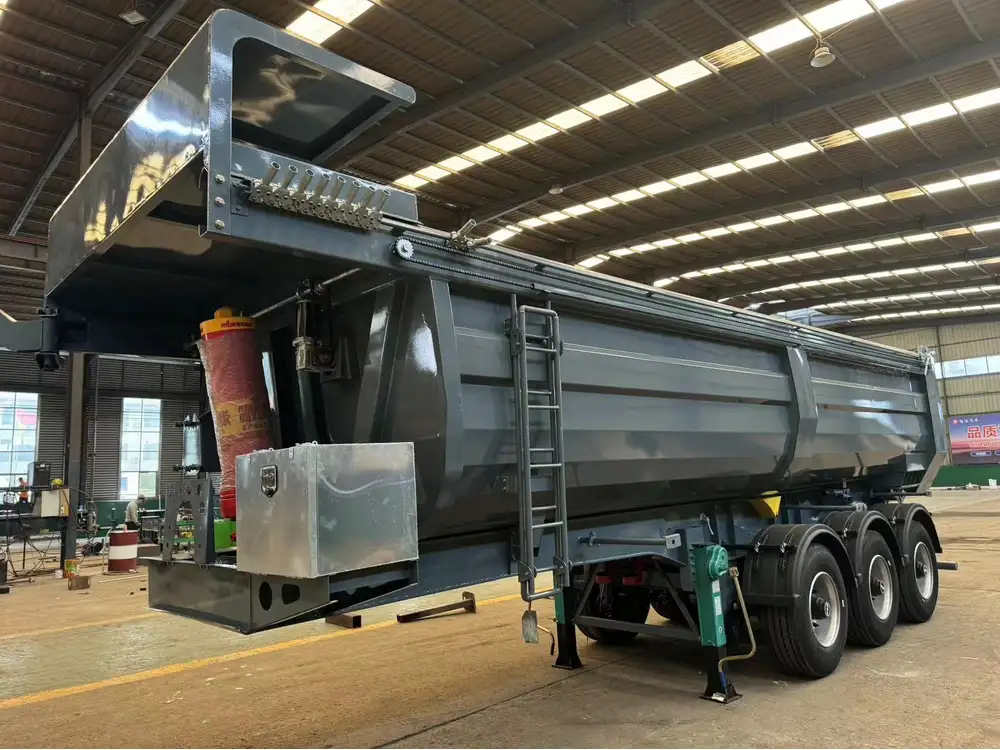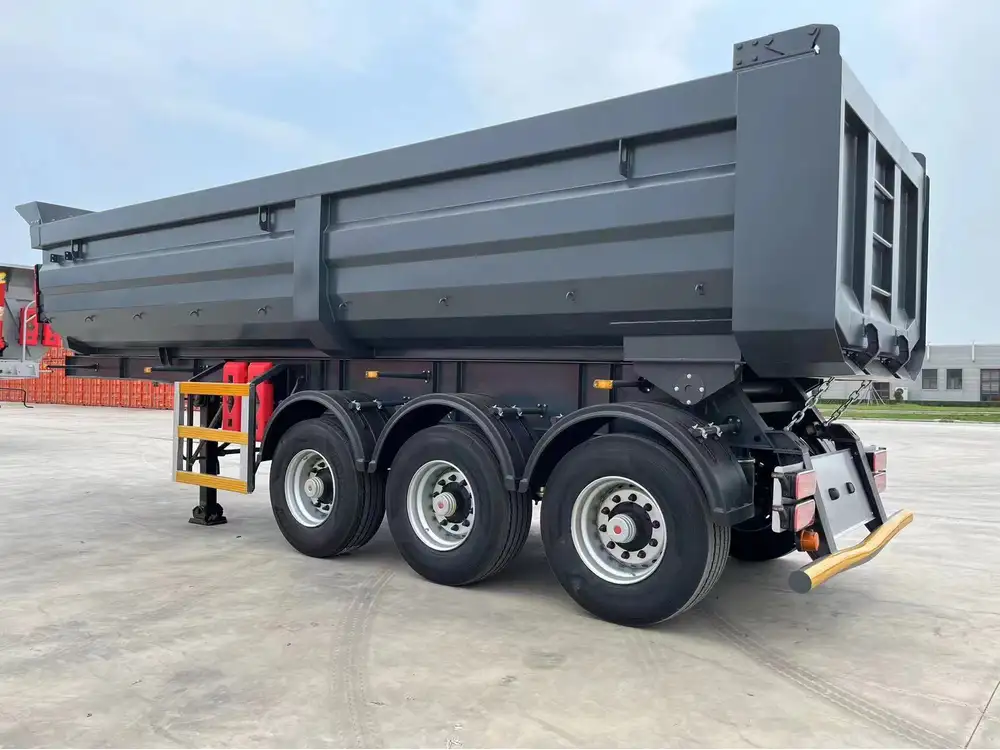Connecting a semi-trailer may seem a straightforward task, but it encompasses a series of steps and considerations that require attention to detail, safety, and technical proficiency. Whether you are a novice truck driver, an experienced professional, or a fleet manager, understanding the nuances involved in this process is crucial. This guide will explore every facet of connecting a semi-trailer, ensuring not just the how-to but also insights into safety, efficiency, and best practices.
Understanding the Components
To start, it’s essential to familiarize oneself with the key components involved in connecting a semi-trailer:
| Component | Description |
|---|---|
| Fifth Wheel | A coupling device mounted on the tractor, facilitating the connection to the trailer. |
| Kingpin | A metal pin attached to the trailer, which inserts into the fifth wheel to secure the trailer. |
| Air Lines | Hoses that connect the trailer’s braking and suspension systems to the tractor. |
| Electrical Lines | Cables providing power to the trailer’s lights and other electrical functions. |
Understanding these components lays the groundwork for successfully connecting a semi-trailer.
Step-by-Step Guide to Connecting a Semi-Trailer

Step 1: Prepare the Area
Before moving the tractor and trailer into position, ensure the area is safe and free from obstructions. Clear away any debris and make sure the ground is level to prevent any accidents during the coupling process. It’s advisable to check the condition of the surrounding environment as well, ensuring that there are no overhead line obstructions or uneven terrain that could pose a hazard.
Step 2: Positioning the Tractor
For a seamless connection, align the tractor trailer unit with the semi-trailer in a straight line. Here’s how to do so effectively:
- Check Mirrors: Utilize the side mirrors to ensure you are in line with the trailer.
- Approach Slowly: Drive forward at a slow speed, making minor adjustments with the steering wheel to align perfectly with the kingpin.
- Final Adjustment: If necessary, shift the tractor slightly to ensure the fifth wheel will securely lock with the kingpin.
Step 3: Lower the Fifth Wheel
Once aligned, lower the fifth wheel plate to the appropriate height. The height should be slightly above the kingpin of the trailer to allow for a proper connection. Ensure the locking mechanism is functioning correctly before proceeding.

Step 4: Connect the Trailer
At this stage, slowly back the tractor towards the trailer until the fifth wheel engages with the kingpin. You will hear a distinctive “click” sound once the connection has been made correctly. To avoid mishaps:
- Monitor Alignment: Keep an eye on the mirrors to ensure continuous alignment throughout the process.
- Check Air Suspension: For trailers equipped with air suspension, ensure the air system is ready to support the weight of the trailer.
Step 5: Secure the Connection
The final step in connecting the semi-trailer involves securing the fifth wheel and ensuring all connections are complete. Here’s how to finalize the process:
- Engage the Locking Mechanism: Make sure the locking jaw on the fifth wheel has engaged the kingpin firmly.
- Perform a Tug Test: This involves pulling forward slightly, then braking, to confirm that the trailer is securely connected. If it disconnects, recheck your previous steps.
Connect Air and Electrical Lines: Attach the air lines and electrical connections between the tractor and trailer. Ensure that:
- Air break lines are correctly secured to prevent leaks.
- Electrical lines are connected firmly, ensuring your trailer lights function correctly.
Safety Protocols
Adhering to safety protocols is paramount while connecting a semi-trailer. Consider the following essential safety measures:
- Personal Protective Equipment (PPE): Wear appropriate gear, such as high-visibility jackets, gloves, and safety shoes.
- Check for Hazards: Always be aware of your surroundings and watch for other vehicles or pedestrians.
- Use Spotters if Necessary: If it’s hard to determine the alignment, having a spotter can significantly reduce the chances of making mistakes during the connection process.

Additional Safety Tips
Inspect Before Connecting:
- Conduct pre-trip inspections on both the tractor and trailer.
- Look for any signs of damage, wear, or required maintenance.
Maintain a Safe Distance:
- When maneuvering, ensure ample space around the unit to avoid accidents.
Be Mindful of Weather Conditions:
- Adjust your connecting process according to weather conditions; wet or icy surfaces can impair control.
Troubleshooting Common Issues
Even after understanding the connection process, issues may arise that require preemptive troubleshooting:
Problem 1: The Fifth Wheel Won’t Lock
Solution: Check if the fifth wheel plate is clean and free from obstructions. Inspect the locking mechanism for any damage or debris.

Problem 2: Air Leaks
Solution: Inspect the air connections thoroughly. If leaks are detected from the lines, replace the damaged parts immediately.
Problem 3: Electrical Faults
Solution: If trailer lights aren’t functioning, check the electrical connections for loose or corroded contacts. A continuity test can help identify faults in the wiring.
Best Practices for Connecting a Semi-Trailer
To excel in connecting a semi-trailer, consider these best practices that promote efficiency and safety in your operation.

Regular Maintenance and Inspections
Frequent checks of the fifth wheel, kingpin, connections, and the overall condition of the tractor and trailer are essential. Create a maintenance schedule to ensure components are functioning correctly and replace them as necessary.
Proficiency Training
Consider regular training sessions for drivers and personnel involved in coupling trailers. A focused training program can encompass practical sessions on hook-up techniques, safety protocols, and troubleshooting processes.
Utilize Technology
Adopting technological solutions such as electronic braking systems, trailer monitoring systems, and even digital coupling aids can significantly enhance the coupling experience and reduce errors.

Innovation in Equipment
Investing in semi-trailer innovations, such as lightweight materials and advanced coupling systems, can improve the user experience and ensure greater efficiency.
Conclusion
Mastering the art of connecting a semi-trailer is a multifaceted endeavor that requires diligence, skill, and adherence to safety protocols. By breaking down the process into digestible steps and understanding the components involved, anyone can learn to couple a semi-trailer confidently. Regular inspections, training, and technological investments form the bedrock of successful and safe operations. As logistics and transportation continue to evolve, staying informed and adept in the best practices and methodologies will ensure efficiency and safety in this vital aspect of freight movement.



